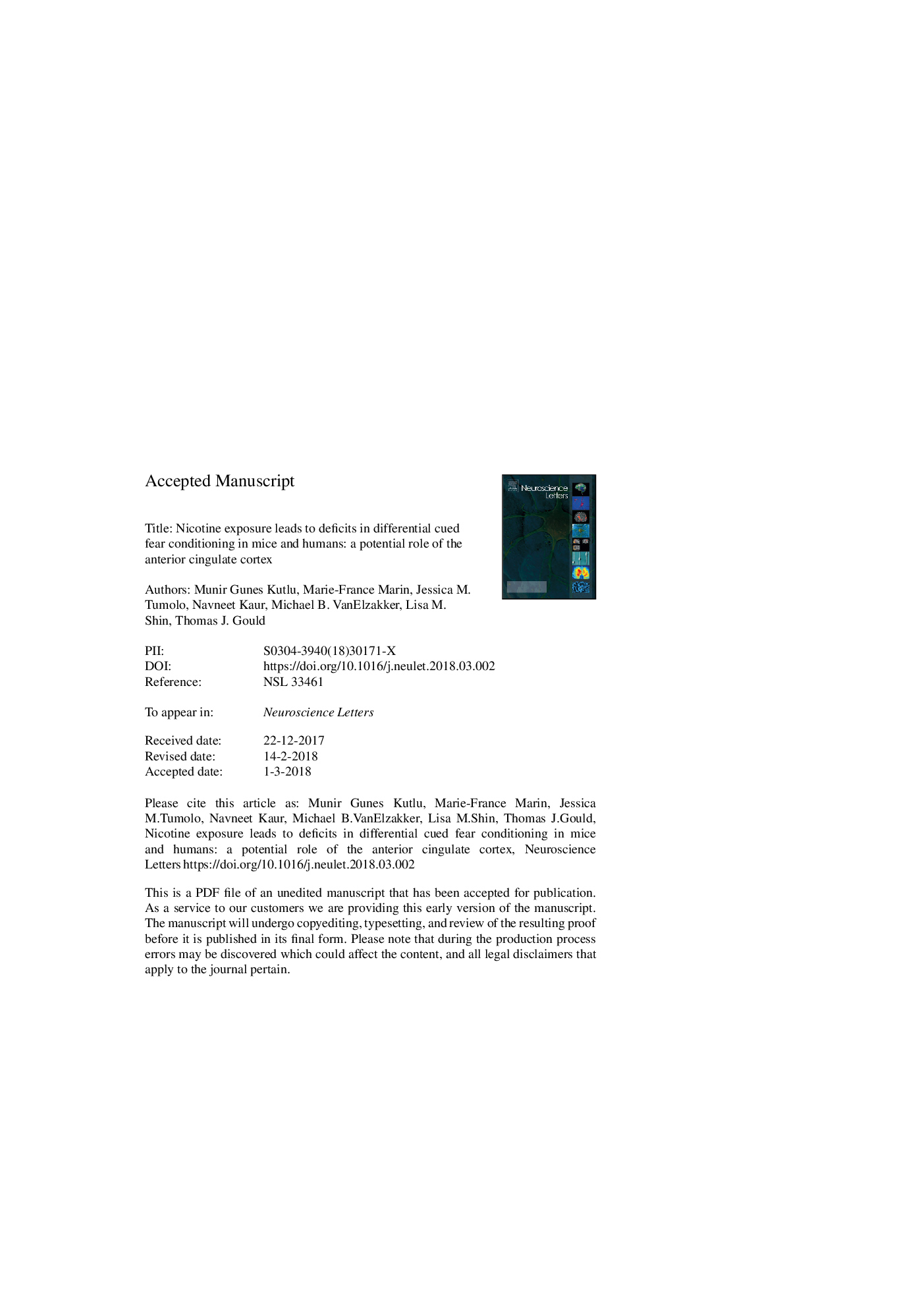| Article ID | Journal | Published Year | Pages | File Type |
|---|---|---|---|---|
| 8841602 | Neuroscience Letters | 2018 | 21 Pages |
Abstract
Stress and anxiety disorders such as posttraumatic stress disorder (PTSD) are characterized by disrupted safety learning. Tobacco smoking has been strongly implicated in stress and anxiety disorder symptomatology, both as a contributing factor and as a vulnerability factor. Rodent studies from our lab have recently shown that acute and chronic nicotine exposure disrupts safety learning. However, it is unknown if these effects of nicotine translate to humans. The present studies addressed this gap by administering a translational differential cued fear conditioning paradigm to both mice and humans. In mice, we found that chronic nicotine exposure reduced discrimination between a conditioned stimulus (CS) that signals for danger (CS+) and another CS that signals for safety (CSâ) during both acquisition and testing. We then employed a similar differential cued fear conditioning paradigm in human smokers and non-smokers undergoing functional magnetic resonance imaging (fMRI). Smokers showed reduced CS+/CSâ discrimination during fear conditioning compared to non-smokers. Furthermore, using fMRI, we found that subgenual and dorsal anterior cingulate cortex activations were lower in smokers than in non-smokers during differential cued fear conditioning. These results suggest a potential biological mechanism underlying a dysregulated ability to discriminate between danger and safety cues. Our results indicate a clear parallel between the effects of nicotine exposure on safety learning in mice and humans and therefore suggest that smoking might represent a risk factor for inability to process information related to danger and safety related cues.
Related Topics
Life Sciences
Neuroscience
Neuroscience (General)
Authors
Munir Gunes Kutlu, Marie-France Marin, Jessica M. Tumolo, Navneet Kaur, Michael B. VanElzakker, Lisa M. Shin, Thomas J. Gould,
